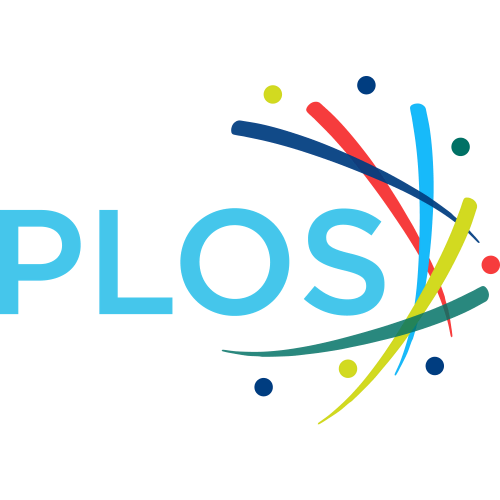Open Access


ACS Chemical Biology, volume 12, issue 9, pages 2448-2456
Linking High-Throughput Screens to Identify MoAs and Novel Inhibitors of Mycobacterium tuberculosis Dihydrofolate Reductase
Santa Maria John P
1
,
Park Yumi
2
,
Yang Lihu
3
,
Murgolo Nicholas
4
,
Altman Michael D.
1
,
Zuck Paul
5
,
Adam Gregory C.
6
,
Chamberlin Chad
7
,
Saradjian Peter
7
,
Dandliker Peter J.
7
,
Boshoff Helena
2
,
Barry Clifton E.
2
,
Garlisi Charles
8
,
Olsen D. B.
9
,
Young Katherine
9
,
Glick Meir
1
,
Nickbarg Elliott
7
,
Kutchukian Peter S
1
1
Modeling & Informatics, Merck Research Laboratories, Boston, Massachusetts, United States
|
2
National Institute of Allergy and Infectious Diseases, Bethesda, Maryland, United States
|
3
Department of Chemistry, Merck Sharp & Dohme Corp., Kenilworth, New Jersey, United States
|
4
Department of Information & Analytics, Merck Sharp & Dohme Corp., Kenilworth, New Jersey, United States
|
5
Research Science, Merck Sharp & Dohme Corp., North Wales, Pennsylvania, United States
|
6
Department of Pharmacology, Merck Sharp & Dohme Corp., North Wales, Pennsylvania, United States
|
7
Department of Pharmacology, Merck Sharp & Dohme Corp., Boston, Massachusetts, United States
|
8
Department of Pharmacology, Merck Sharp & Dohme Corp., Kenilworth, New Jersey, United States
|
9
Neglected Tropical Disease Discovery, Merck Sharp & Dohme Corp., West Point, Pennsylvania, United States
|
Publication type: Journal Article
Publication date: 2017-08-29
Journal:
ACS Chemical Biology
Quartile SCImago
Q1
Quartile WOS
Q2
Impact factor: 4
ISSN: 15548929, 15548937
PubMed ID:
28806050
Biochemistry
General Medicine
Molecular Medicine
Abstract
Though phenotypic and target-based high-throughput screening approaches have been employed to discover new antibiotics, the identification of promising therapeutic candidates remains challenging. Each approach provides different information, and understanding their results can provide hypotheses for a mechanism of action (MoA) and reveal actionable chemical matter. Here, we describe a framework for identifying efficacy targets of bioactive compounds. High throughput biophysical profiling against a broad range of targets coupled with machine learning was employed to identify chemical features with predicted efficacy targets for a given phenotypic screen. We validate the approach on data from a set of 55 000 compounds in 24 historical internal antibacterial phenotypic screens and 636 bacterial targets screened in high-throughput biophysical binding assays. Models were built to reveal the relationships between phenotype, target, and chemotype, which recapitulated mechanisms for known antibacterials. We also prospectively identified novel inhibitors of dihydrofolate reductase with nanomolar antibacterial efficacy against Mycobacterium tuberculosis. Molecular modeling provided structural insight into target-ligand interactions underlying selective killing activity toward mycobacteria over human cells.
Citations by journals
|
1
2
|
|
|
PLoS ONE

|

PLoS ONE
2 publications, 8.33%
|
|
European Journal of Medicinal Chemistry

|

European Journal of Medicinal Chemistry
2 publications, 8.33%
|
|
Combinatorial Chemistry and High Throughput Screening

|

Combinatorial Chemistry and High Throughput Screening
1 publication, 4.17%
|
|
Frontiers in Chemistry

|

Frontiers in Chemistry
1 publication, 4.17%
|
|
Nature Reviews Chemistry

|

Nature Reviews Chemistry
1 publication, 4.17%
|
|
Phosphorus, Sulfur and Silicon and the Related Elements

|

Phosphorus, Sulfur and Silicon and the Related Elements
1 publication, 4.17%
|
|
Journal of Molecular Structure

|

Journal of Molecular Structure
1 publication, 4.17%
|
|
Methods

|

Methods
1 publication, 4.17%
|
|
SLAS Discovery

|

SLAS Discovery
1 publication, 4.17%
|
|
ChemMedChem

|

ChemMedChem
1 publication, 4.17%
|
|
Wiley Interdisciplinary Reviews: Computational Molecular Science

|

Wiley Interdisciplinary Reviews: Computational Molecular Science
1 publication, 4.17%
|
|
ACS Infectious Diseases

|

ACS Infectious Diseases
1 publication, 4.17%
|
|
Journal of Biomolecular Structure and Dynamics

|

Journal of Biomolecular Structure and Dynamics
1 publication, 4.17%
|
|
Expert Opinion on Drug Discovery

|

Expert Opinion on Drug Discovery
1 publication, 4.17%
|
|
Annals of the New York Academy of Sciences

|

Annals of the New York Academy of Sciences
1 publication, 4.17%
|
|
Antibiotics

|

Antibiotics
1 publication, 4.17%
|
|
Journal of Medicinal Chemistry

|

Journal of Medicinal Chemistry
1 publication, 4.17%
|
|
Antimicrobial Agents and Chemotherapy

|

Antimicrobial Agents and Chemotherapy
1 publication, 4.17%
|
|
Current Organic Synthesis

|

Current Organic Synthesis
1 publication, 4.17%
|
|
Science advances

|

Science advances
1 publication, 4.17%
|
|
1
2
|
Citations by publishers
|
1
2
3
4
|
|
|
Elsevier

|

Elsevier
4 publications, 16.67%
|
|
Taylor & Francis

|

Taylor & Francis
3 publications, 12.5%
|
|
Wiley

|

Wiley
3 publications, 12.5%
|
|
Bentham Science

|

Bentham Science
2 publications, 8.33%
|
|
Public Library of Science (PLoS)

|

Public Library of Science (PLoS)
2 publications, 8.33%
|
|
American Chemical Society (ACS)

|

American Chemical Society (ACS)
2 publications, 8.33%
|
|
Frontiers Media S.A.

|

Frontiers Media S.A.
1 publication, 4.17%
|
|
Springer Nature

|

Springer Nature
1 publication, 4.17%
|
|
SAGE

|

SAGE
1 publication, 4.17%
|
|
Multidisciplinary Digital Publishing Institute (MDPI)

|

Multidisciplinary Digital Publishing Institute (MDPI)
1 publication, 4.17%
|
|
American Society for Microbiology

|

American Society for Microbiology
1 publication, 4.17%
|
|
American Association for the Advancement of Science (AAAS)

|

American Association for the Advancement of Science (AAAS)
1 publication, 4.17%
|
|
1
2
3
4
|
- We do not take into account publications that without a DOI.
- Statistics recalculated only for publications connected to researchers, organizations and labs registered on the platform.
- Statistics recalculated weekly.
{"yearsCitations":{"type":"bar","data":{"show":true,"labels":[2018,2019,2020,2021,2022,2023,2024],"ids":[0,0,0,0,0,0,0],"codes":[0,0,0,0,0,0,0],"imageUrls":["","","","","","",""],"datasets":[{"label":"Citations number","data":[5,3,5,2,3,4,2],"backgroundColor":["#3B82F6","#3B82F6","#3B82F6","#3B82F6","#3B82F6","#3B82F6","#3B82F6"],"percentage":["20.83","12.5","20.83","8.33","12.5","16.67","8.33"],"barThickness":null}]},"options":{"indexAxis":"x","maintainAspectRatio":true,"scales":{"y":{"ticks":{"precision":0,"autoSkip":false,"font":{"family":"Montserrat"},"color":"#000000"}},"x":{"ticks":{"stepSize":1,"precision":0,"font":{"family":"Montserrat"},"color":"#000000"}}},"plugins":{"legend":{"position":"top","labels":{"font":{"family":"Montserrat"},"color":"#000000"}},"title":{"display":true,"text":"Citations per year","font":{"size":24,"family":"Montserrat","weight":600},"color":"#000000"}}}},"journals":{"type":"bar","data":{"show":true,"labels":["PLoS ONE","European Journal of Medicinal Chemistry","Combinatorial Chemistry and High Throughput Screening","Frontiers in Chemistry","Nature Reviews Chemistry","Phosphorus, Sulfur and Silicon and the Related Elements","Journal of Molecular Structure","Methods","SLAS Discovery","ChemMedChem","Wiley Interdisciplinary Reviews: Computational Molecular Science","ACS Infectious Diseases","Journal of Biomolecular Structure and Dynamics","Expert Opinion on Drug Discovery","Annals of the New York Academy of Sciences","Antibiotics","Journal of Medicinal Chemistry","Antimicrobial Agents and Chemotherapy","Current Organic Synthesis","Science advances"],"ids":[24963,8171,13844,6407,6657,12904,9347,16671,25009,1430,22866,7781,3040,7740,18676,1488,3673,17567,20129,23003],"codes":[0,0,0,0,0,0,0,0,0,0,0,0,0,0,0,0,0,0,0,0],"imageUrls":["\/storage\/images\/resized\/PRGhlgB4OKRltSNtT39eA6wlnOTGRap1QQ6FQHih_medium.webp","\/storage\/images\/resized\/GDnYOu1UpMMfMMRV6Aqle4H0YLLsraeD9IP9qScG_medium.webp","\/storage\/images\/resized\/doUaFUZdxUEQjLi1TwZjGHi8HXYNWWSk04dSC6Xh_medium.webp","\/storage\/images\/resized\/4QWA67eqfcfyOiA8Wk7YnqroHFqQbTsmDJUYTCTg_medium.webp","\/storage\/images\/resized\/voXLqlsvTwv5p3iMQ8Dhs95nqB4AXOG7Taj7G4ra_medium.webp","\/storage\/images\/resized\/5YZtvLvkPZuc2JHOaZsjCvGSHFCuC3drUwN3YAc5_medium.webp","\/storage\/images\/resized\/GDnYOu1UpMMfMMRV6Aqle4H0YLLsraeD9IP9qScG_medium.webp","\/storage\/images\/resized\/GDnYOu1UpMMfMMRV6Aqle4H0YLLsraeD9IP9qScG_medium.webp","\/storage\/images\/resized\/ruydfaB80LDjlkYqsfOeUAZohOIODyq7bQzis5O7_medium.webp","\/storage\/images\/resized\/bRyGpdm98BkAUYiK1YFNpl5Z7hPu6Gd87gbIeuG3_medium.webp","\/storage\/images\/resized\/bRyGpdm98BkAUYiK1YFNpl5Z7hPu6Gd87gbIeuG3_medium.webp","\/storage\/images\/resized\/iLiQsFqFaSEx6chlGQ5fbAwF6VYU3WWa08hkss0g_medium.webp","\/storage\/images\/resized\/5YZtvLvkPZuc2JHOaZsjCvGSHFCuC3drUwN3YAc5_medium.webp","\/storage\/images\/resized\/5YZtvLvkPZuc2JHOaZsjCvGSHFCuC3drUwN3YAc5_medium.webp","\/storage\/images\/resized\/bRyGpdm98BkAUYiK1YFNpl5Z7hPu6Gd87gbIeuG3_medium.webp","\/storage\/images\/resized\/MjH1ITP7lMYGxeqUZfkt2BnVLgjkk413jwBV97XX_medium.webp","\/storage\/images\/resized\/iLiQsFqFaSEx6chlGQ5fbAwF6VYU3WWa08hkss0g_medium.webp","\/storage\/images\/resized\/VPE7q24PXoHr5SS2SqfEgxccSMUxWLfZINOX60uo_medium.webp","\/storage\/images\/resized\/doUaFUZdxUEQjLi1TwZjGHi8HXYNWWSk04dSC6Xh_medium.webp","\/storage\/images\/resized\/s10mcsCV4OAUg9O2KrqOquQC0PhyLMI8hUUkuflM_medium.webp"],"datasets":[{"label":"","data":[2,2,1,1,1,1,1,1,1,1,1,1,1,1,1,1,1,1,1,1],"backgroundColor":["#3B82F6","#3B82F6","#3B82F6","#3B82F6","#3B82F6","#3B82F6","#3B82F6","#3B82F6","#3B82F6","#3B82F6","#3B82F6","#3B82F6","#3B82F6","#3B82F6","#3B82F6","#3B82F6","#3B82F6","#3B82F6","#3B82F6","#3B82F6"],"percentage":[8.33,8.33,4.17,4.17,4.17,4.17,4.17,4.17,4.17,4.17,4.17,4.17,4.17,4.17,4.17,4.17,4.17,4.17,4.17,4.17],"barThickness":13}]},"options":{"indexAxis":"y","maintainAspectRatio":false,"scales":{"y":{"ticks":{"precision":0,"autoSkip":false,"font":{"family":"Montserrat"},"color":"#000000"}},"x":{"ticks":{"stepSize":null,"precision":0,"font":{"family":"Montserrat"},"color":"#000000"}}},"plugins":{"legend":{"position":"top","labels":{"font":{"family":"Montserrat"},"color":"#000000"}},"title":{"display":true,"text":"Journals","font":{"size":24,"family":"Montserrat","weight":600},"color":"#000000"}}}},"publishers":{"type":"bar","data":{"show":true,"labels":["Elsevier","Taylor & Francis","Wiley","Bentham Science","Public Library of Science (PLoS)","American Chemical Society (ACS)","Frontiers Media S.A.","Springer Nature","SAGE","Multidisciplinary Digital Publishing Institute (MDPI)","American Society for Microbiology","American Association for the Advancement of Science (AAAS)"],"ids":[17,18,11,39,344,40,208,8,31,202,142,189],"codes":[0,0,0,0,0,0,0,0,0,0,0,0],"imageUrls":["\/storage\/images\/resized\/GDnYOu1UpMMfMMRV6Aqle4H0YLLsraeD9IP9qScG_medium.webp","\/storage\/images\/resized\/5YZtvLvkPZuc2JHOaZsjCvGSHFCuC3drUwN3YAc5_medium.webp","\/storage\/images\/resized\/bRyGpdm98BkAUYiK1YFNpl5Z7hPu6Gd87gbIeuG3_medium.webp","\/storage\/images\/resized\/doUaFUZdxUEQjLi1TwZjGHi8HXYNWWSk04dSC6Xh_medium.webp","\/storage\/images\/resized\/PRGhlgB4OKRltSNtT39eA6wlnOTGRap1QQ6FQHih_medium.webp","\/storage\/images\/resized\/iLiQsFqFaSEx6chlGQ5fbAwF6VYU3WWa08hkss0g_medium.webp","\/storage\/images\/resized\/4QWA67eqfcfyOiA8Wk7YnqroHFqQbTsmDJUYTCTg_medium.webp","\/storage\/images\/resized\/voXLqlsvTwv5p3iMQ8Dhs95nqB4AXOG7Taj7G4ra_medium.webp","\/storage\/images\/resized\/ruydfaB80LDjlkYqsfOeUAZohOIODyq7bQzis5O7_medium.webp","\/storage\/images\/resized\/MjH1ITP7lMYGxeqUZfkt2BnVLgjkk413jwBV97XX_medium.webp","\/storage\/images\/resized\/VPE7q24PXoHr5SS2SqfEgxccSMUxWLfZINOX60uo_medium.webp","\/storage\/images\/resized\/s10mcsCV4OAUg9O2KrqOquQC0PhyLMI8hUUkuflM_medium.webp"],"datasets":[{"label":"","data":[4,3,3,2,2,2,1,1,1,1,1,1],"backgroundColor":["#3B82F6","#3B82F6","#3B82F6","#3B82F6","#3B82F6","#3B82F6","#3B82F6","#3B82F6","#3B82F6","#3B82F6","#3B82F6","#3B82F6"],"percentage":[16.67,12.5,12.5,8.33,8.33,8.33,4.17,4.17,4.17,4.17,4.17,4.17],"barThickness":13}]},"options":{"indexAxis":"y","maintainAspectRatio":false,"scales":{"y":{"ticks":{"precision":0,"autoSkip":false,"font":{"family":"Montserrat"},"color":"#000000"}},"x":{"ticks":{"stepSize":null,"precision":0,"font":{"family":"Montserrat"},"color":"#000000"}}},"plugins":{"legend":{"position":"top","labels":{"font":{"family":"Montserrat"},"color":"#000000"}},"title":{"display":true,"text":"Publishers","font":{"size":24,"family":"Montserrat","weight":600},"color":"#000000"}}}}}
Metrics
Cite this
GOST |
RIS |
BibTex |
MLA
Cite this
GOST
Copy
Santa Maria J. P. et al. Linking High-Throughput Screens to Identify MoAs and Novel Inhibitors of Mycobacterium tuberculosis Dihydrofolate Reductase // ACS Chemical Biology. 2017. Vol. 12. No. 9. pp. 2448-2456.
GOST all authors (up to 50)
Copy
Santa Maria J. P., Park Y., Yang L., Murgolo N., Altman M. D., Zuck P., Adam G. C., Chamberlin C., Saradjian P., Dandliker P. J., Boshoff H., Barry C. E., Garlisi C., Olsen D. B., Young K., Glick M., Nickbarg E., Kutchukian P. S. Linking High-Throughput Screens to Identify MoAs and Novel Inhibitors of Mycobacterium tuberculosis Dihydrofolate Reductase // ACS Chemical Biology. 2017. Vol. 12. No. 9. pp. 2448-2456.
Cite this
RIS
Copy
TY - JOUR
DO - 10.1021/acschembio.7b00468
UR - https://doi.org/10.1021%2Facschembio.7b00468
TI - Linking High-Throughput Screens to Identify MoAs and Novel Inhibitors of Mycobacterium tuberculosis Dihydrofolate Reductase
T2 - ACS Chemical Biology
AU - Park, Yumi
AU - Yang, Lihu
AU - Altman, Michael D.
AU - Zuck, Paul
AU - Chamberlin, Chad
AU - Saradjian, Peter
AU - Garlisi, Charles
AU - Glick, Meir
AU - Santa Maria, John P
AU - Kutchukian, Peter S
AU - Murgolo, Nicholas
AU - Adam, Gregory C.
AU - Dandliker, Peter J.
AU - Boshoff, Helena
AU - Barry, Clifton E.
AU - Olsen, D. B.
AU - Young, Katherine
AU - Nickbarg, Elliott
PY - 2017
DA - 2017/08/29 00:00:00
PB - American Chemical Society (ACS)
SP - 2448-2456
IS - 9
VL - 12
PMID - 28806050
SN - 1554-8929
SN - 1554-8937
ER -
Cite this
BibTex
Copy
@article{2017_Santa Maria,
author = {Yumi Park and Lihu Yang and Michael D. Altman and Paul Zuck and Chad Chamberlin and Peter Saradjian and Charles Garlisi and Meir Glick and John P Santa Maria and Peter S Kutchukian and Nicholas Murgolo and Gregory C. Adam and Peter J. Dandliker and Helena Boshoff and Clifton E. Barry and D. B. Olsen and Katherine Young and Elliott Nickbarg},
title = {Linking High-Throughput Screens to Identify MoAs and Novel Inhibitors of Mycobacterium tuberculosis Dihydrofolate Reductase},
journal = {ACS Chemical Biology},
year = {2017},
volume = {12},
publisher = {American Chemical Society (ACS)},
month = {aug},
url = {https://doi.org/10.1021%2Facschembio.7b00468},
number = {9},
pages = {2448--2456},
doi = {10.1021/acschembio.7b00468}
}
Cite this
MLA
Copy
Santa Maria, John P., et al. “Linking High-Throughput Screens to Identify MoAs and Novel Inhibitors of Mycobacterium tuberculosis Dihydrofolate Reductase.” ACS Chemical Biology, vol. 12, no. 9, Aug. 2017, pp. 2448-2456. https://doi.org/10.1021%2Facschembio.7b00468.
